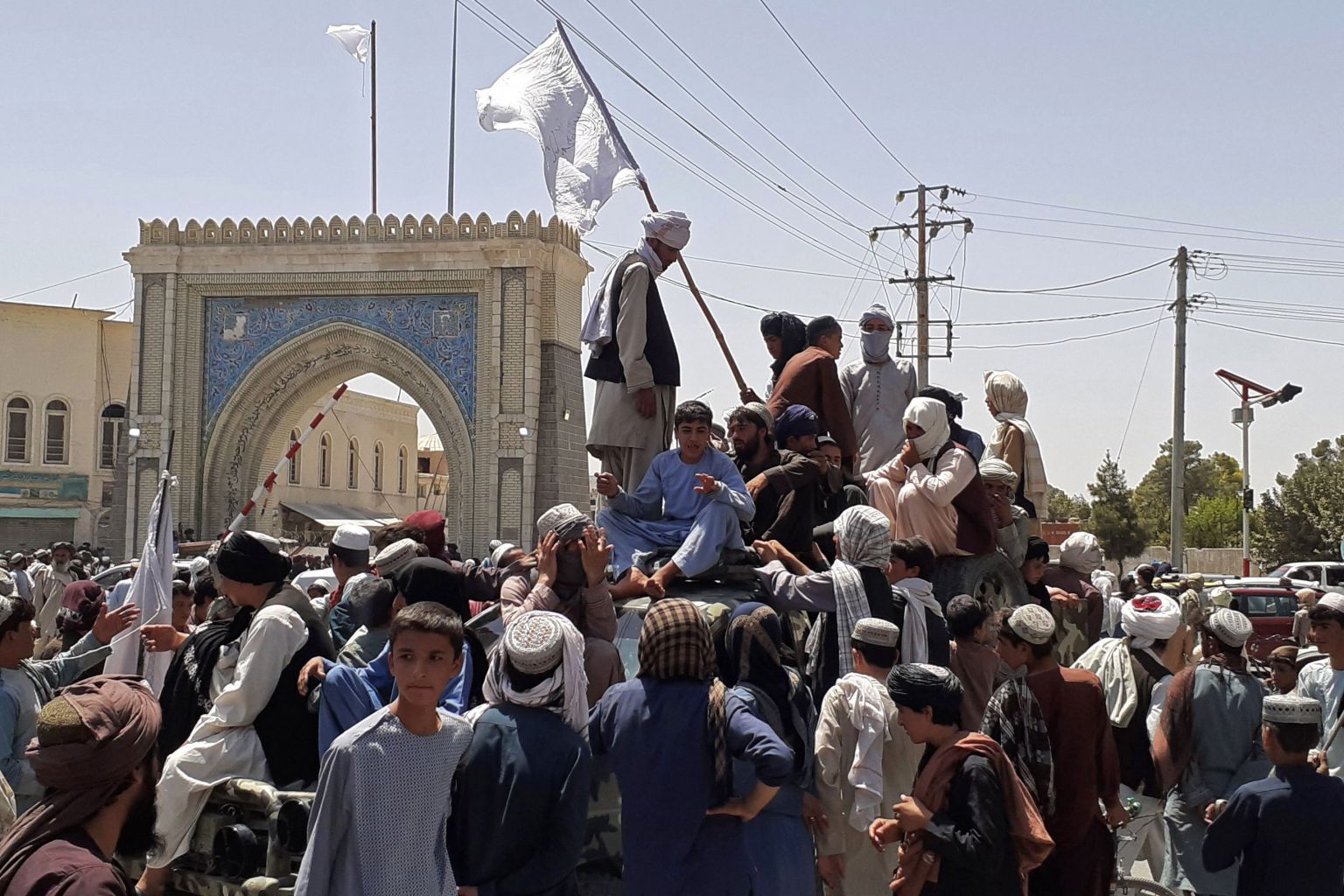
Taleban fighters stand on a vehicle along the roadside in Kandahar on Aug 13, 2021.
PHOTO: AFP
Follow topic:
Taleban militants have taken control over most of Afghanistan since US-led forces began withdrawing their troops. The 20-year war started in 2001, after the Sept 11 attacks.
2001
Sept 11: Al-Qaeda operatives hijack three commercial airliners and crash them into the World Trade Center in New York and the Pentagon in Washington. A fourth plane crashes in a field in Shanksville, Pennsylvania. Nearly 3,000 people die. The US declares "a war against terrorism" and demands that the Taleban regime in Afghanistan hand over Al-Qaeda leader Osama bin Laden.
Oct 7: The US military, with British support, launches a bombing campaign - Operation Enduring Freedom - against the Taleban. Ground forces arrive 12 days later.
Nov 1: The Taleban begins to retreat as its strongholds in Mazar-i-Sharif, Taloqan, Bamiyan, Herat, Kabul and Jalalabad are swiftly captured.
Dec 9: The Taleban surrenders in Kandahar, officially marking the end of the regime.
2002
March: Operation Anaconda is launched against some 800 Al-Qaeda and Taleban fighters in Shah-i-Kot Valley. The US begins shifting resources from Afghanistan to wage war on Iraq.
June: Mr Hamid Karzai is picked to head Afghanistan's transitional government.
2003
May 1: US Secretary of Defence Donald Rumsfeld declares the end of major combat in Afghanistan, as President George W. Bush announces victory in Iraq.
2004
Oct 9: Mr Karzai is elected Afghan President in historic national balloting.
Oct 9: Osama resurfaces in a videotaped message before the US presidential election.
2006
July: Violence increases across the country, with intense fighting in the south. Suicide and remotely detonated bombings rise.
2009
July: US Marines launch a major offensive in southern Afghanistan.
November: Mr Karzai wins a second term after a disputed election.
2010
November: Nato member states sign a declaration to hand over full responsibility for security to Afghan forces by end-2014.
2011
May 1: Osama is killed by US forces in Pakistan.
2012
March: The Taleban suspends preliminary talks with the US on a peace deal.
2013
June: Afghan forces take over security responsibilities from Nato, whose focus shifts to military training and counter-terrorism.
2014
May 27: President Barack Obama announces a timetable to pull out most US forces by end-2016.
2017
April 13: The US drops its most powerful non-nuclear bomb on suspected Islamic State in Iraq and Syria militants in eastern Nangarhar province.
2018
January: The Taleban launches major attacks even as the Trump administration deploys troops across rural Afghanistan.
2019
February: US-Taleban talks build momentum following signals that President Donald Trump plans to pull out about half of the US deployment.
Sept 7: Mr Trump breaks off peace talks a week after an "in- principle agreement" is reached, after a US soldier is killed in a Taleban attack.
2020
Feb 29: US special envoy Zalmay Khalilzad and top Taleban official Mullah Abdul Ghani Baradar sign an agreement that paves the way for a significant drawdown of US troops and includes a Taleban guarantee that the country will not be used for terrorist activities.
Sept 12: Intra-Afghan peace talks begin in Doha.
2021
April 14: President Joe Biden announces the full withdrawal of US troops by Sept 11.
May 4: Taleban fighters attack southern Helmand province and at least six other provinces.
June 22: The Taleban launches attacks in the north. The United Nations envoy for Afghanistan says the militants have taken more than 50 of 370 districts.
July 2: US troops pull out from Bagram Air Base, effectively ending US involvement in the war.
Aug 6-13: The Taleban captures 16 cities in just eight days.


